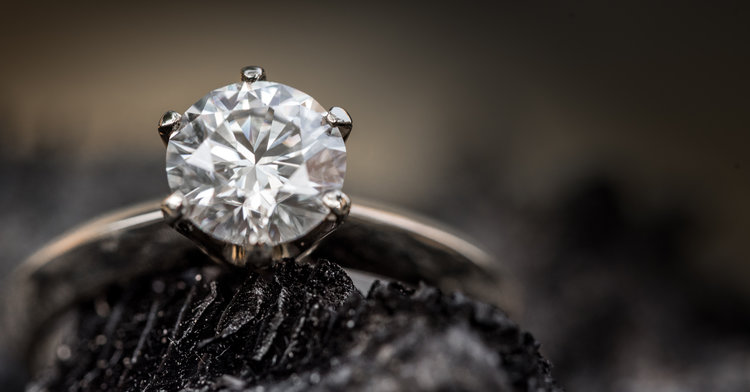It’s no secret the the FTC ruling last year which unanimously ruled that lab grown diamonds would now be classified as a real diamonds, sent shock waves through the jewelry industry. Chemically, physically, and optically identical to mined diamonds, lab grown diamonds (also known as CVD Diamonds) have exponentially skyrocketed in popularity over recent years and the FTC ruling only added to their new found status.

What was once a minor annoyance has now become a much more credible threat to mined diamond companies and they are not taking it lightly.
In May of 2015, seven of the most prominent and known diamond companies joined forces to create the Diamond Producers Association (or DPA). The DPA Members include, De Beers, Petra Diamonds, Dominion Diamond, Rio Tinto, Gem Diamonds, Alrosa, Lucara Diamond, and Murowa Diamonds. What’s even more interesting than the unification of these competitors is the tactics they’re using to spread their message.
“The Diamond Producers Association (DPA) exists to maintain and enhance consumer demand for, and confidence in diamonds. By promoting the integrity and reputation of diamonds and the diamond industry, the DPA will play a central role in ensuring the long term sustainability of the sector.”
– Diamond Producers Association Website

Lab-Grown DiamondEngagement Ring
Although they do not specifically call out lab grown diamonds in their mission statement, the target of their efforts is hard to miss. Their bedrock campaign called “Real is Rare” focuses on promoting a positive message about mined diamonds to a millennial demographic. This happens to be the same demographic that many hold responsible for the recent surge in demand for lab grown diamonds. A recent study by MVI Marketing found that over 70% of millennials will consider a lab-grown diamond engagement ring. There are many reasons millennials have been embracing lab grown diamonds as an alternative to mined, but the primary two factors are generally agreed to be financially and ethically motivated.
“There’s also an ethical concern when it comes to the origins of natural diamonds. About 65% of the world’s diamonds are mined in Africa, sometimes in war zones by forced labor, the proceeds of which are often used to fund those wars.”
– Stephanie Talmadge, GQ Magazine

If a millennial wishes to buy a diamond, they tend to worry about its origins more than previous generations. This younger generation was raised on social media with articles of social injustices and environmental catastrophes flooding their news feeds on a daily basis. It’s no wonder millennials are more aware of the negative environmental and human rights issues sometimes associated with mined diamonds.
“Lab-grown’s appeal is clear. When consumers buy a mined diamond, it comes with a high price in collateral environmental damage. Mined diamonds represent,“seven times the level of impact as compared to lab-grown diamonds. There is negligible soil displacement and no irreversible environmental damage,”
– A Diamond Choice: Lab-Grown Diamonds and The Future of the Diamond Industry, a report by the International Grown Diamond Association (IGDA) citing the Frost & Sullivan environmental impact analysis
The other reason millennials are embracing lab grown diamonds is for financial reasons. Unlike past generations, millennials aren’t as financially stable as older generations. And although it still takes a lot of time and money to manufacture grown diamonds, they continue to sell for around 35% less than mined diamonds. This difference in pricing is huge for millennials, even when it comes to engagement rings. Many couples would rather put the money they save on a ring to their wedding, honeymoon, or starting their lives together.

What’s more is that many consumers are drawn to the “bang for their buck” factor which lab grown diamonds provide. The IGDA and MVI Research Firm conducted a survey of nearly 2,000 recent jewelry purchasers and found that when given a choice between a 1.9-carat lab-grown diamond and a 1.4-carat mined diamond at the same price, nearly two-thirds (63%) of consumers selected the man-made alternative.
“Consumers are attracted by the environmental and social responsibility elements of the lab-grown diamond story, but appear most compelled by their ability to trade up in diamond size and quality for the same price as smaller mined diamonds,”
– A Diamond Choice: Lab-Grown Diamonds and The Future of the Diamond Industry, a report by the International Grown Diamond Association (IGDA)
For these reasons and more, it’s clear to see why DPA and mined diamond advocates would feel pressure to bring millennials into their fold. However, the effectiveness of their tactics is of yet unseen. From the latest statistics available, lab grown diamonds are continuing to have what could be described as a meteoric rise. A recent study by the International Grown Diamond Association (IGDA) found that 51% of consumers are aware of lab-grown diamonds, compared to 9% in 2010. This is a significant hike in awareness and one that shows little sign of slowing down. Furthermore, once consumers are aware of lab grown diamonds, it seems to make them even more eager to embrace the alternative to mined diamonds.

The “Real is Rare” campaign continues to update their website and social media platforms regularly. They have paid commercials playing on Youtube before videos and are collaborating with many personalities to create an impressive amount of content. It will be interesting to see if the DPA keeps with this strategy or becomes more direct in their approach as more and more millennials embrace lab grown diamonds as the preferred option to mined.

